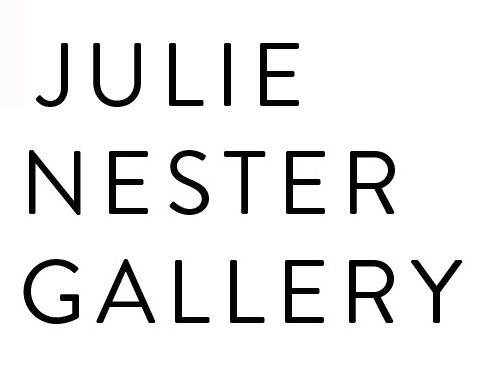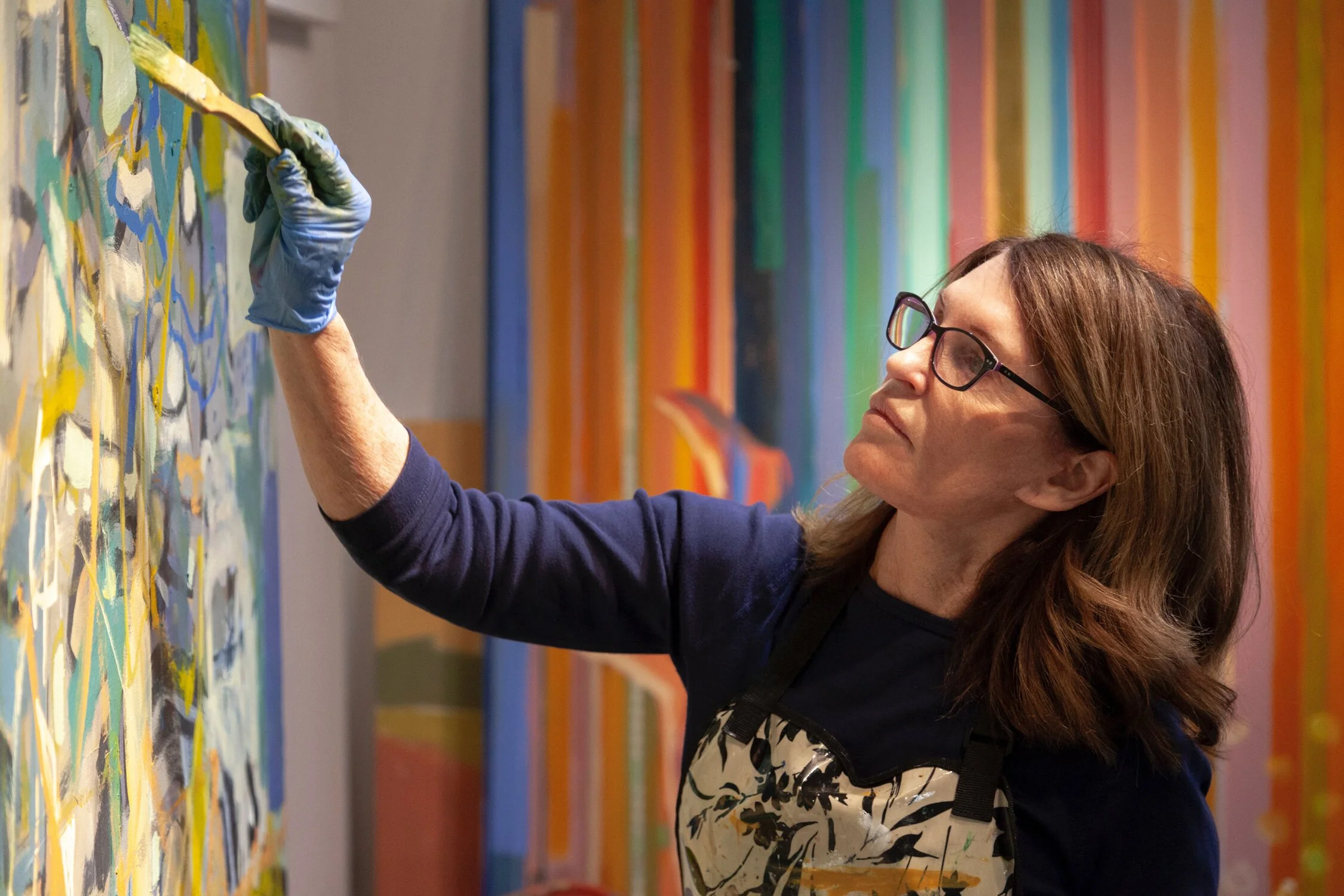LINDA CHRISTENSEN
Back to Artwork Images
“I begin this short essay with my artists’ statement from 1997 because it illustrates my focus on emotion instead of on subject matter starting early on. I approached the idea of writing about what I paint back then with dread and tried to bypass it by being as honest as possible about my process. I’d like to think that I paint anything I want because through paint I can express how I feel.
I started training to be an artist in early childhood. I studied texture. I learned about composition. I played with color and observed the beauty of line. My methods were unconventional and invented by me. Many different things inspired me: Cheerios in milk, clouds, hands in food, dry dusty dirt, wet mud puddles, coloring books, fashion photos in the newspaper and my keen need to observe my surroundings. When asked what I wanted to be when I grew up I had no answer. I just wanted to watch, and to observe the world around me.
I’ve worked for years on a response to that complicated question “what is the work about?” I’ve developed all kinds of stories that seem to make sense at the time, but I have to ask, “isn’t this the same question as ‘what do you want to be when you grow up?”’ I am drawn to the figure, and to capturing physical expression in all types of situations, but especially when we are on our own. The body carries emotion, and most people are unaware that they reveal something of themselves when observed in private moments. When I was young I realized that I could easily understand the unspoken just by watching. It felt like a strange and isolating gift – and sometimes a curse – and I often felt confused and acted out in anger when the words didn’t match what I saw. But I still recognize all kinds of emotion there, and whether what I see is true or not, I relish the vulnerability of the moment.
Color is another important tool for me. It’s a self-taught endeavor and one that I explore daily. Color mixing is similar to building flavors in a soup. A soup with just salt is watery and uninteresting. As in cooking, I pay close attention from the first layers what each color feels like in terms of its value, whether it’s warm or cool, and how it fits the composition. I am looking for something that feels harmonious with my nervous system. I begin with abstract shapes, then ask, “Is this shape interesting? Does this color work next to that one? Is it too strong? Is it helpful to the overall composition?” The more complex the mix, the more likely it is to hold my attention, and allow me to linger. Those puddles of paint sitting on my six foot glass palette are essential in setting the stage for what comes next.
Ultimately, my work is a series of self-portraits. I know those poses; I’ve shaded my eyes, I’ve collected on the beach, I’ve weighted a foot. Therefore I don’t closely study how to draw the figure. I don’t necessarily want to get everything “right” or follow the rules, as in my childhood. I want the freedom to show you the flaws and imperfections. I want to feel the emotion that comes with being human, and I want you to feel that too. I know how it feels to be me. In truth, I am not an observer of others but an observer of myself.”
| 1280 Iron Horse Dr, Park City UT | 435.649.7855 |

